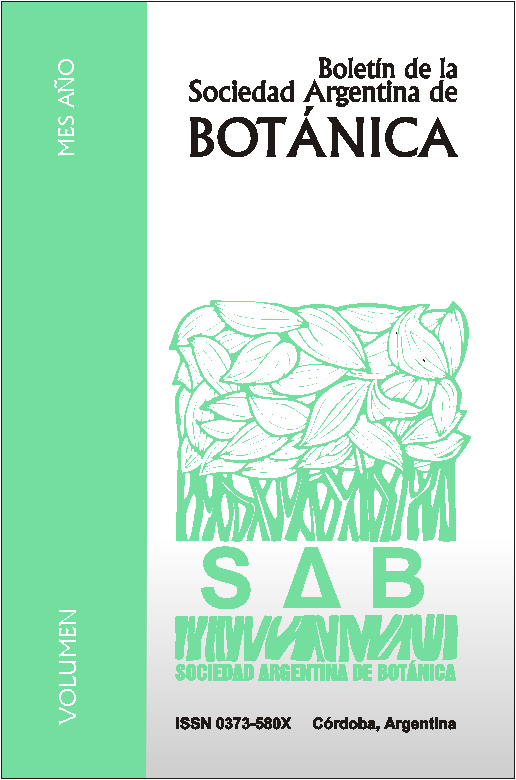Morfoanatomy and histochemistry in Asteraceae native from Chaco Serrano Forest (Córdoba, Argentina).
DOI:
https://doi.org/10.31055/1851.2372.v51.n4.16337Keywords:
Austroeupatorium inulifolium, Baccharis salicifolia, Chromolaena hookeriana, Ophryosporus axilliflorus, secretory duct, trichomes, endodermis, Caspary band.Abstract
Morfoanatomy and histochemistry in Asteraceae native from Chaco Serrano Forest (Córdoba, Argentina). Chaco Serrano Forest is characterized by a semiarid climate; the species that live there have
modifications related mainly to water balance. In this habitat the Asteraceae family is one of the largest, concentrating large numbers of species with medicinal properties. Four of them were studied in this work, they are: Austroeupatorium inulifolium, Baccharis salicifolia, Chromolaena hookeriana and Ophryosporus axilliflorus. We inquired about air vegetative organs in order to understand the adaptive strategies presented in relation to the environment in which they live, detect active producing structures and infer the chemicals they produce. In the four studied species xeromorphic features were observed, including the presence of trichomes, ducts and endodermis with Caspary band in the stem. Also they were positive in pectic and lipid compounds test and B. salicifolia presented tannins in the epidermis. We conclude that the secretory structures and chemicals found were directly related to the medicinal properties of these
species.
Downloads
Published
Issue
Section
License
Provides immediate and free OPEN ACCESS to its content under the principle of making research freely available to the public, which fosters a greater exchange of global knowledge, allowing authors to maintain their copyright without restrictions.
Material published in Bol. Soc. Argent. Bot. is distributed under a Creative Commons Attribution-NonCommercial-ShareAlike 4.0 International license.





